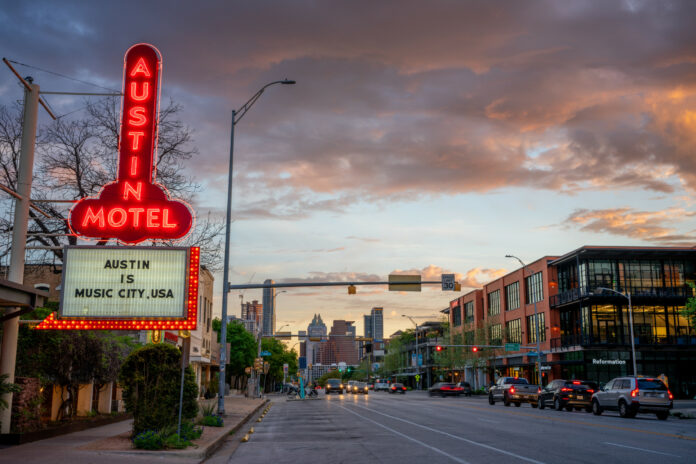Austin was the place to be during the COVID-19 pandemic. Boasting warmer temperatures, lower cost of living and cheap rent and housing prices, millions of Americans fled expensive areas like California and New York for the reprieve of the up-and-coming Texas capital.
This was good for sellers, who typically brought in significant profits compared to what they purchased their home for.
“Like many places during the pandemic, Austin thrived due to warm weather, no state income tax, affordable housing, and access to outdoor activities,” Cody Horvat, a real estate broker for The Scott Group, told Newsweek. “However, the city wasn’t prepared for the speed at which it was growing. The surge in demand caused prices to skyrocket, a lack of housing developed, and traffic congestion built to unseen levels.”
Now, four years since the start of the pandemic, the city is becoming a relative housing market wasteland, experts said—or, at the very least, declining in market value significantly.
Brandon Bell/Getty Images
According to SmartAsset, Austin’s rent prices went up 25.5 percent from 2019 to 2023, and home prices accelerated by 55.6 percent.
But more recent statistics reflect a more complicated story. According to Apartment List, Austin’s rents declined by 7 percent over the last year, and home prices fell by 11 percent since 2022, the Freddie Mac House Price Index says.
“The metro was attracting technology companies, both old and new, to have the appeal of the next Silicon Valley without those California real estate prices and population density,” Alan Chang, the founder and president of Vested Title & Escrow, told Newsweek. “That only lasted a few months before real estate started to grow astronomically. I was seeing homes sell over more than twice the purchase price from 18 months prior.”
The median home price stands at about $500,000, making it cheaper than San Francisco or New York prices on average while still giving sellers a significant leg up. Despite that recent trend, fewer Americans are not looking to make their new home there anymore.
In a report last year, Redfin found that there were actually more residents looking to leave Austin than move to it.
Part of this real estate mix-up is due to shifting job markets. With tech layoffs occurring nationwide, many companies have reduced their employee counts in the tech hub city. There’s also less remote work available as companies implement return-to-office policies.
“Now that the pandemic has ended, offices are calling people back into work and we are seeing people return to the cities that they originally left,” Horvat said. “This isn’t necessarily a bad thing for Austin, nor do I think the housing market there will see a massive dip in pricing.”
Horvat still believes the areas that offer affordable housing and access to a downtown city center will thrive in 2024. While Austin might have been the first wave of attractive cities for homebuyers in the past few years, other areas like Kansas City could quickly gain traction with a median home price of about $230,000, he said.
“Homes in this area are affordable, even for younger homebuyers, and they have access to a great downtown with a thriving nightlife,” Horvat said.
Uncommon Knowledge
Newsweek is committed to challenging conventional wisdom and finding connections in the search for common ground.
Newsweek is committed to challenging conventional wisdom and finding connections in the search for common ground.


